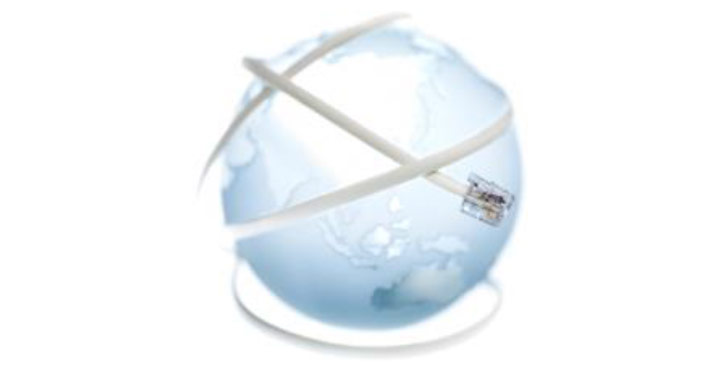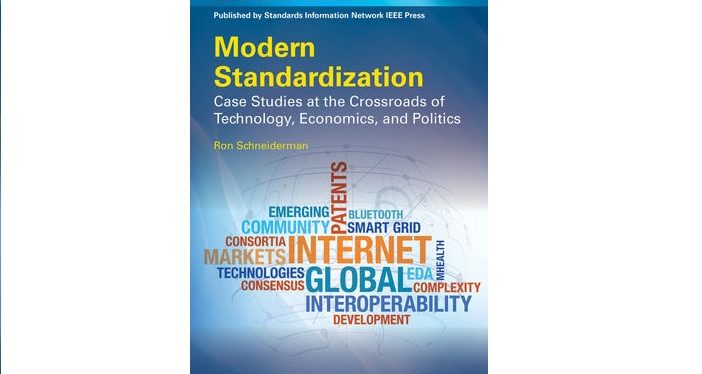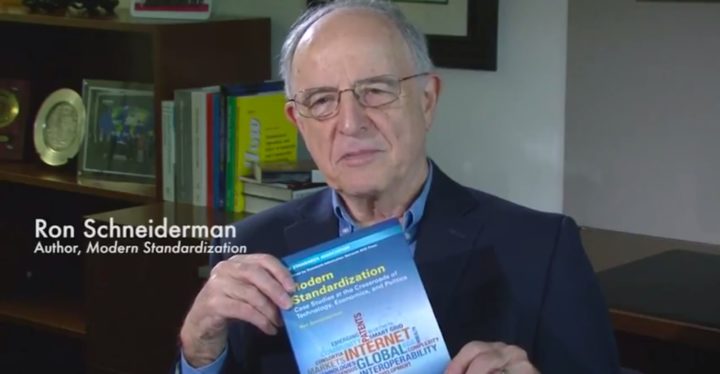Globalization and Standardization
Prologue
In the spring of 2015, we decided to write an article on the relationship between globalization and standardization. Between us we have more than seven decades of experience in the world of globalization and standardization. Given the general understanding that standards control access to virtually every market in global commerce, and directly affect more than eighty percent of world trade, our basic conclusion is that the relationship between globalization and standardization is, or should be, a critical area of understanding for policy makers all over the world. To begin development of this article we sent invitations to substantially more than one hundred individuals and standards organizations who are expert in the field of globalization and standardization (academic, private sector, and public sectors) to submit their views and comments on this critical issue. To our surprise, only two standards organizations, the International Electrotechnical Commission (IEC) and DIN (the German national standards organization) accepted our invitation to submit comments. The conclusions from the IEC and DIN comments are set forth in this article. The complete IEC and DIN comments are set forth in their respective attachments to this article. These comments offer insights into the significance of the relationship between globalization and standardization. We encourage interested readers to review these comments.
Introduction
In his book The Lexus and the Olive Tree (1999), Thomas Friedman states that understanding globalization is one of the most important issues that must be understood by policymakers and executives all over the world. As stated by Mr. Friedman: Globalization is “The One Big Thing” people should focus on. Globalization is not the only thing influencing events in the world today, but to the extent there is a North Star and a worldwide shaping force, it is this system.
The purpose of this paper is to share some insights into the relationship between globalization and standardization, and to pose some issues relating to this issue for future thought and study.
Globalization
“Globalization is a process of interaction and integration among the people, companies, and governments of different nations, a process driven by international trade and investment and aided by information technology. This process has effects on the environment, on culture, on political systems, on economic development and prosperity, and on human physical we ll–being in societies around the world.” (www.globalization101.org/what-is-globalization/) “Globalization is not new, though. For thousands of years, people—and, later, corporations— have been buying from and selling to each other in lands at great distances, such as through the famed Silk Road across Central Asia that connected China and Europe during the Middle Ages. Likewise, for centuries, people and corporations have invested in enterprises in other countries. In fact, many of the features of the current wave of globalization are similar to those prevailing before the outbreak of the First World War in 1914.” (www.globalization101.org/what-is-globalization/) “A defining feature of globalization, therefore, is an international industrial and financial business structure. Technology has been the other principal driver of globalization. Advances in information technology, in particular, have dramatically transformed given all sorts of individual economic actors— consumers, investors, businesses—valuable new tools for identifying and pursuing economic opportunities, including faster and more informed analyses of economic trends around the world, easy transfers of assets, and collaboration with far-flung partners.” (emphasis added) (www.globalization101 .org/what-is-globalization/)
Standardization
“Standards govern the design, operation, manufacture, and use of nearly everything that mankind produces. There are standards to protect the environment and human health and safety, and to mediate commercial transactions. Other standards ensure that different products are compatible when hooked together. There are even standards of acceptable behavior within a society. Standards generally go unnoticed. They are mostly quiet, unseen forces, such as specifications, regulations, and protocols that ensure that things work properly, interactively, and responsibly. How standards come about is a mystery to most people should they even ponder the question.” (From the foreword to Global Standards – Building Blocks for the Future, Report to Congress, Office of Technology Assessment).
Global Perspectives on the Strategic Value of Standards
For many years, it has been generally accepted that standards control access to markets. Consider, for example, the following statements. “The technology standard has become the source of a core competitive edge for industrial development. To some extent, a technology standard is a kind of development order and rule. Whoever controls the power of standard making and has its technology as the leading standard, commands the initiative of the market. Technology standards have become an important means of global economic competition, and directly influence the competitiveness of an industry, region or country. Therefore, as for Chinese enterprises, possessing the successful standard is a strategic choice to seize the leadership of the future industrial development.” (Program, Conference on Information Technology, Beijing, China (May 2005); emphasis added) “Standards have become the new [international] battleground.” (Phillip J. Bond, Undersecretary of Commerce for Technology Policy, New York Times article, “China Poses Trade Worry as It Gains in Technology,” January 13, 2004; emphasis added)
Global Technology Base
Several years ago, the Institute for Electrical and Electronics Engineers (IEEE) estimated that 500,000 standards existed in the world that forms the technology foundation of the global marketplace. IEEE estimated that it costs at least $1.5 billion (US) annually to maintain these standards. Imagine a world in which the global marketplace will be significantly transformed by technological advancement in the next few years through the process of globalization, requiring the revision of thousands of existing standards and potentially affecting trillions of dollars (US) in international trade.
The Strategic Value of Technology Standards and International Trade
For several years, it has been generally accepted that technology standards directly affect at least eighty percent of international trade. For example, Joe Bhatia, President of the American National Standards Institute, estimated in 2011 that standards directly affected at least eighty percent of thirteen trillion dollars in international trade. (http://publicaa.ansi.org/sites/apdl/ Documents/News%20and%20Publications/ Speeches/2-28-11%20-%20Bhatia%20-%20 APEC%20Standards%20Education.pdf)
IEC and DIN Comments on Globalization and Standardization
IEC and DIN recently prepared comprehensive comments on Globalization and Standardization in response to our invitation. These comments are attached to this article. Set forth below are the conclusions from their respective comments.
IEC Conclusion
The global organization of trade and production is rapidly changing, especially in electrical and electronic goods. International manufacturing, trade, and investments are increasingly organized within global value chains where the different stages of the production process are located across different countries. (www.oecd.org/sti/ind/global- value-chains.htm). The emergence of these global value chains challenges traditional, integrated, vertical manufacturing. At the same time it provides new opportunities for small and medium companies in developed and developing countries. The key condition is that they work with universally accepted, harmonized rules—international standards—to be able to contribute efficiently at different points of the chain, while extracting maximum value for themselves and their national economies. For electronic and electric devices the world has truly become one market. (emphasis added)
DIN Conclusion
If “Economic ‘globalization’ is a historical process, the result of human innovation and technological progress… and the movement of knowledge (technology) across international borders,” as the International Monetary Fund suggests, it is clear that international technical standards are at the very core of this process (International Monetary Fund, 2000, “Globalization: Threat or Opportunity?”). As standards play an important role in the diffusion of knowledge they not only support globalization, they also support the technological progress in developing and emerging markets. They can help businesses all around the world to reach a level playing field and get their share of economic success.
Issues to Think About
If standards control access to markets, and directly affect more than eighty percent of world trade, there are some important issues that should be considered by all parties in the world interested in global trade and economic development.
Global Competition and Control of the Global Standardization Process
Among the most important issues are global competition and who controls the global standardization process. This is a difficult issue to address because there is an absence of data on the effects of competition in the global standardization process. Moreover, since standards are typically developed by various groups or committees in the private and public sectors, it is difficult to discern who was sitting at the table during development of a particular standard, and whose interest did the participants represent. In short, global competition and control of the global standardization process operates in a rather cloudy environment. Should the global standardization process become much more transparent so that interested parties can more fully understand the potential competitive effects of particular standards, and exactly who are the interested parties developing a specific global standard?
Standardization Skills and Experience
The development of complex technology standards requires a multi-disciplinary set of skills and experience. Today’s world is heavily dominated by engineering, science, and technology issues; however it is not sufficient to participate in a standardization project and depend on engineering, scientific, and/or technology skills alone. Effective participation in standardization projects requires a multi-disciplinary view that includes business, commerce, trade, and public policy issues such as health, safety, the environment, energy, sustainability, ethics, and potential legal risks. In short, participation in global standardization projects requires considerable preparation.
If success in the world of global standardization is of importance, development of multidisciplinary skills and a global perspective are essential to achieving success.
The Strategic Value of Standards Education
Prior to 2000, very little attention was paid to the role of standards education in the academic, private, and public sectors except for the role of On-The-Job Training (OJT) programs. Since 2000 there has been a virtual explosion of academic programs on the strategic value of standards education. At the present time, Asian countries such as South Korea, China, and Japan are leading the world in the establishment of university standards education programs. South Korea is estimated to have such programs at more than forty universities; China is estimated to have such programs at more than twenty universities; and Japan has at least twelve universities with standards education programs. China offers a master’s degree in the Business School at Jailing University in which bright, talented graduate students can receive an MBA in Standardization.
Fortunately, the United States has made significant strides in recent years to substantially improve the standards education programs at various universities. For example, the National Institute of Standards and Technology has funded the creation of more than sixteen new standards education programs. The United States continues to rely heavily on the continued support of the private and public sectors that offer OJT and education programs.
In 2008, The Center for Global Standards Analysis published a report on The Strategic Value of Standards Education. In the Center’s report, Professor Shiro Kurihara of Hitotsubashi University (Tokyo, Japan), offered the following comments on the need for standards education programs:
“The national economy of every nation depends upon its ability to develop and maintain an effective international standards system best suited to its needs. Given that standards are the essential building blocks by which every nation develops and maintains a competitive national economy, the challenge is to develop international standards education programs that meet the specific needs of a particular country in their private, public, and academic sectors. For decades, private corporations and government departments and agencies have carried the burden of standards education by preparing their best and brightest employees to work in the complex field of international standardization (in the form of “on the job” training). There is no question that international standards education programs offered by private corporations and government departments must be continued and expanded wherever possible. But in today’s fast-paced and highly competitive world, are these efforts enough? A key question we must now address is whether nations need to make significant investments in creating academic opportunities for their best and brightest students to study the complex field of international standardization. (emphasis added)
Conclusion
The essential issue in the relationship between globalization and standardization is survival. The most basic question is whether individuals, companies, and governments are prepared to participate in the complex, multi-disciplinary world of global standardization. Consider the following proverb:
“Every morning in Africa, a gazelle wakes up. It knows it must run faster than the fastest lion or it will be killed…every morning a lion wakes up. It knows it must outrun the slowest gazelle or it will starve to death. It doesn’t matter whether you are a lion or a gazelle…when the sun comes up, you’d better be running.”
Competition in the field of global standardization can be brutal if an individual, company or government agency is not prepared. Are you prepared?
Selected Internet Citations for Globalization and Standardization
- What is Globalization? globaliza tion101.org/what-is-globalization/
- Griswold, Dennis, The Blessings and Challenges of Globalization www.cato.org/publications/commentary/bless ings-challenges-globalization
- Cameron, Diane, Globalization and standards…a liberalization of trade and the potential for a regulatory race to the top (MIT, Diane Cameron) MIT, http://dspace.mit.edu/handle/1721.1/41764
- Purcell, Donald, Globalization and the Role of Standardization, 2011 speech to the ISO HRM Committee strate www.gicstandards.com/files/SES/Globaliza tionAndStandardization.pdf
- Globalization: Threat or Opportunity (IMF Report 2000) www.imf.org/exter nal/np/exr/ib/2000/041200to.htm
- Standards Competition and Globalization (ZDNet, March 2008) www.zdnet.com/article/standards-competition-and-globalization
- Buthe, Tim and Walter Mattli, The New Global Rulers: The Privatization of Regulation in the World Economy, http://press.princeton.edu/titles/9470.html
- Bhatia, Joe, The Value of Standards Education, Joe Bhatia, President, American National Standards Institute, Speech to APEC, http://publicaa.ansi.org/sites/apdl/Documents/News%20and%20 Publications/Speeches/2-28-11%20 -%20Bhatia%20-%20APEC%20Stan dards%20Education.pdf
- Koppell, Jonathan GS, World Rule: Accountability, Legitimacy, and the Design of Global Governance www .press.uchicago.edu/ucp/books/book/ chicago/W/bo9101445.html
“Globalization and Standardization” March/April 2016 issue of Standards Engineering, The Journal of SES – The Society for Standards Professionals reprinted with permission from The Society for Standards Professionals, ©2016.
 Donald Purcell
Donald Purcell
Donald Purcell has more than three decades of experience in global standardization as an advisor to domestic and international standards committees. He is the former Chairman of The Center for Global Standards Analysis, and is Adjunct Faculty for the graduate course on Strategic Standardization in the School of Engineering, Catholic University of America. He can be reached at donpurcell@strategicstandards.com
 Gary Kushnier
Gary Kushnier
Gary Kushnier has more than four decades of experience in the field of global standardization as the former Vice President for International Policy at the American National Standards Institute. He can be reached at gkushnier@gmail.com.





